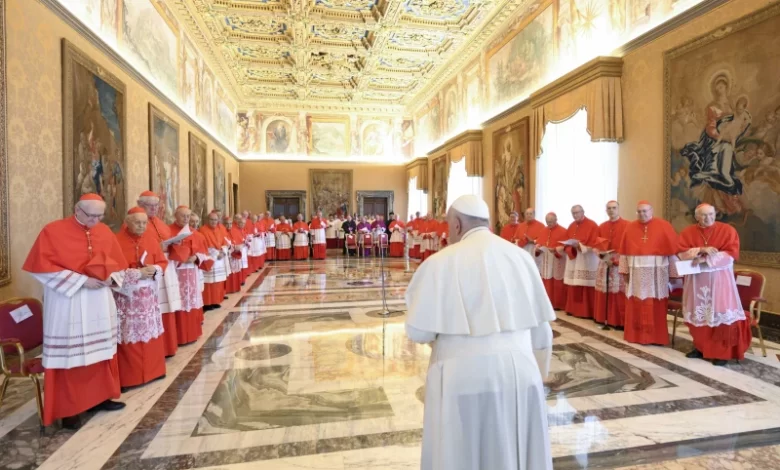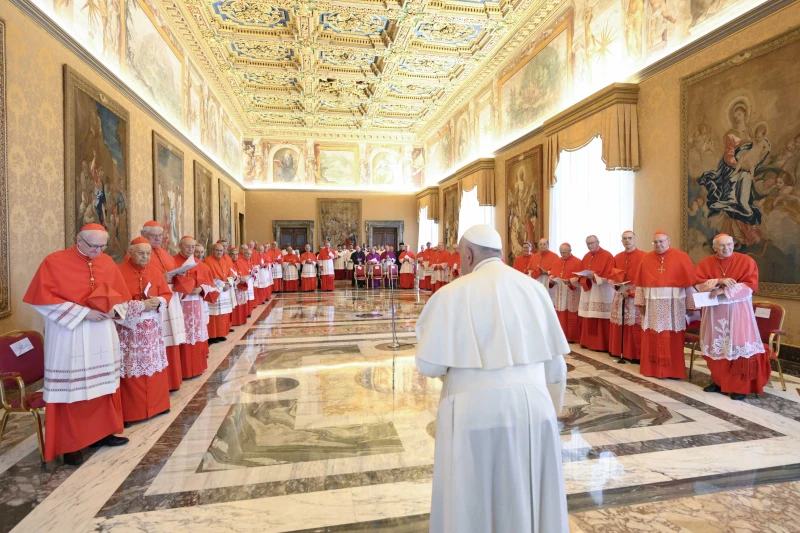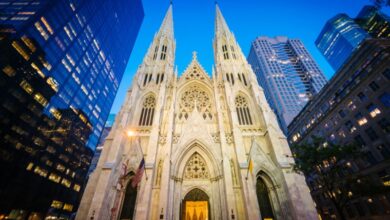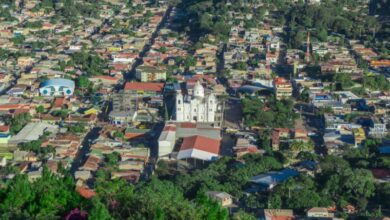What does it mean that almost half of the new cardinals will be from religious orders?

 Pope Francis meets with the College of Cardinals on July 1, 2024. / Credit: Vatican Media
Pope Francis meets with the College of Cardinals on July 1, 2024. / Credit: Vatican Media Rome Newsroom, Dec 6, 2024 / 16:15 pm (CNA).
Out of the 21 cardinals who will be created Dec. 7 in Pope Francis’ 10th consistory at the Vatican, 10 new cardinals — almost half — are members of religious congregations or institutes.
Since the pope himself belongs to the Society of Jesus (Jesuits) and has consistently considered the presence of men religious in the College of Cardinals during his consistories, it’s not surprising that he would choose new cardinals from among the Church’s many congregations and institutes for men religious.
What is unusual, however, is the large number of cardinals from religious orders and institutes named in this latest consistory and the diversity of communities represented.
The 10 religious are divided as follows:
-
Three are Franciscans (two are Friars Minor and one Conventual).
-
Two are from the Society of the Divine Word (Verbiti).
-
Two are Dominicans.
-
There is one each from the Congregation of the Mission (Vincentians), the Missionaries of St. Charles Borromeo (Scalabrinians), and the Congregation of the Most Holy Redeemer (Redemptorists).
The new cardinals are:
-
Archbishop Luis Gerardo Cabrera Herrera, OFM, metropolitan archbishop of Guayaquil, Ecuador (Franciscan)
-
Archbishop Jaime Spengler, OFM, metropolitan archbishop of Porto Alegre, Brazil; president of the Brazilian Episcopal Conference; and president of Latin American Episcopal Council, CELAM (Franciscan)
-
Archbishop Dominique Joseph Mathieu, OFM Conv, archbishop of Tehran-Ispahan, Iran (Conventual Franciscan)
-
Archbishop Tarcisius Isao Kikuchi, SVD, metropolitan archbishop of Tokyo and president of Caritas Internationalis (Society of the Divine Word/Verbiti)
-
Archbishop László Német, SVD, metropolitan archbishop of Belgrade, Serbia (Society of the Divine Word/Verbiti)
-
Archbishop Jean-Paul Vesco, OP, metropolitan archbishop of Algiers, Algeria (Dominican)
-
Archbishop Vicente Bokalic Iglic, CM, archbishop of Santiago del Estero, Argentina (Congregation of the Mission/Vincentians)
-
Bishop Mykola Byčok, CSSR, eparch of St. Peter and Paul of Melbourne of the Ukrainians in Australia (Congregation of the Most Holy Redeemer/Redemptorists)
-
Father Timothy Radcliffe, OP, former master general of the Order of Preachers as well as current spiritual assistant of the 16th Ordinary General Assembly of the Synod of Bishops (Dominican)
-
Father Fabio Baggio, CS, undersecretary for the migrants and refugees section of the Dicastery for Promoting Integral Human Development (Missionaries of St. Charles Borromeo/Scalabrinians)
As noted, the new cardinals from religious communities make up almost half of the newest class and represent the largest group of men religious chosen in one consistory throughout Pope Francis’ nearly 12-year pontificate. The closest was in 2019, when eight of 13 new cardinals were men religious.
In all, out of the 163 cardinals created in the 10 consistories of his pontificate, Pope Francis has chosen 55 men religious from more than 20 religious communities. He has thus averaged between four and five men religious in each consistory.
Eight cardinals are Jesuits, including Cardinal Luis Francisco Ladaria Ferrer, prefect emeritus of the Dicastery for the Doctrine of the Faith, and two prominent figures of the pontificate: Cardinal Jean-Claude Hollerich of Luxembourg, who was also the relator general of the Synod on Synodality, and Cardinal Michael Czerny, prefect of the Dicastery for Promoting Integral Human Development.
Six are Salesians, including Cardinal Charles Maung Bo of Yangon, Myanmar, and Cardinal Cristóbal López Romero of Rabat, Morocco. The Capuchin Franciscans claim four members, including Cardinal Fridolin Ambongo Besungu of Kinshasa, Democratic Republic of Congo, who led the African bishops’ opposition to Fiducia Supplicans, which permitted blessings of same-sex couples; and Cardinal Raniero Cantalamessa, the longtime preacher of the Papal Household.
Other notable cardinals on the list are: the Redemptorist Joseph William Tobin, metropolitan archbishop of Newark, New Jersey; the Discalced Carmelite Anders Arborelius, bishop of Stockholm, Sweden, and a convert to Catholicism; the late Comboni Missionary Miguel Ángel Ayuso Guixot, one of the leading experts in interreligious dialogue, who died at the end of November; the Consolata Missionary Giorgio Marengo, apostolic prefect of Ulaanbaatar, Mongolia, one of the youngest members of the College of Cardinals; and the American-born Augustinian Robert Prevost, prefect of the Dicastery for Bishops.
After the latest consistory, among the living cardinals stretching back to the pontificate of St. John Paul II, there will be a total of 11 Salesians, nine Jesuits, five Capuchin Franciscans, five Friars Minor, four Dominicans, three Conventional Franciscan Friars, two Spiritans, two Claretians, two Missionary Oblates of Mary Immaculate, two Missionaries of Africa (the White Fathers), two Redemptorists, two Society of the Divine Word (Verbites), and one from each of the following communities: Eudists, Schoenstatt Fathers, Cistercians, Augustinian Recollects, Congregation of Holy Cross, Missionaries of the Sacred Heart of Jesus, Discalced Carmelites, Sulpicians, Mariamite Maronites, Scalabrinians, Legionaries of Christ, Consolata Missionaries, and the Augustinians. There are also two members of Opus Dei.
A question that will be asked, of course, is whether cardinals who belong to religious communities are more heavily represented in the College of Cardinals under Pope Francis than his immediate predecessors.
Among the 140 cardinal-electors after the conclusion of this latest consistory, there are now 35 cardinals who are religious, meaning they represent nearly 25% of the total body of voters. By comparison, in 2005, at the time of John Paul II’s death, there were 117 cardinal-electors who were eligible to participate in the subsequent conclave (two ultimately did not take part). Of these 20 were men religious, meaning they comprised 17% of the voters.
In 2013, there were 115 cardinal-electors eligible to take part in the election of Pope Benedict XVI’s successor after his resignation. There were 18 men religious among the electors, comprising 15.5% of the voters. One of them, of course, was elected pope — the Jesuit Cardinal Jorge Mario Bergoglio, who took the name Francis.
This story was based on a story first published by ACI Stampa, CNA’s Italian-language news partner, and has been translated and adapted by CNA.





